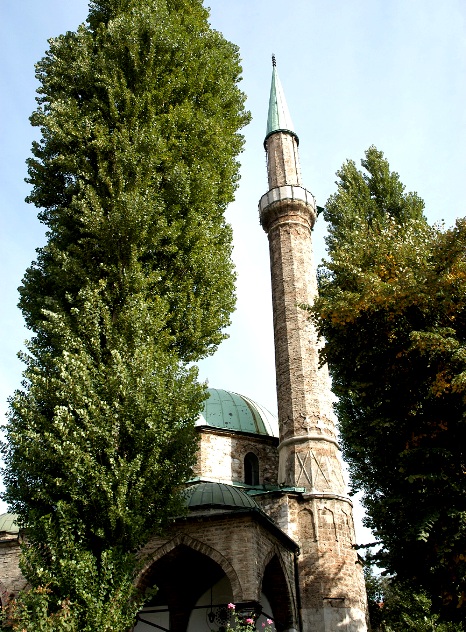|
|
European travel destinations: Bosnia and Herzegovina
Bosnia and Herzegovina is the Eastern European country and located in the central part of the Balkan Peninsula. The country borders with Croatia in the west and north, with Serbia in the east and with Montenegro in the southeast. It has a rather limited but still very important access to the Adriatic Sea. The country consists of two autonomous entities: Federation of Bosnia and Herzegovina and Republika Srpska. A third region, the Brcko District, is governed locally.
Bosnia occupies the northern part of the country, along the valley of the Sava River and its tributaries.
Herzegovina is located further to the south in the basin of the Neretva River. Republika Srpska occupies the northeast part of the country, adjacent to Serbia.
Bosnia and Herzegovina is a mountainous country. Most of it is located within the Dinaric Alps that is a complex system of mountain ranges, ridges, hollows, and valleys.

|
|
Bosnia and Herzegovina: gorgeous landscapes. Image source: http://ec.europa.eu
|
Bosnia and Herzegovina is one of the ancient crossroads of civilization. The territory of Bosnia and Herzegovina is home to many architectural monuments of the Byzantine and Ottoman periods. This fact makes this country one of the most popular tourist destinations among the socialist countries. However, the war in the early 90's wiped out many of the unique historical monuments. Tourist infrastructure was completely destroyed. Only now, Bosnia and Herzegovina is beginning to regain its former glory with the help of the international community.

|
|
Sarajevo. Image source: http://ec.europa.eu
|
The city of Sarajevo, the capital and the largest city of Bosnia and Herzegovina, was founded in 1263. Then it was renamed Bosnovar. The city, surrounded by mountains and open only to the west, is located at an altitude of 450 meters above the sea level. Before the war, Sarajevo was considered "the most eastern city in Europe", as it almost completely preserved its rich "oriental" appearance with a huge number of mosques, narrow streets, markets, and the picturesque old Turkish bazaar.
The Eastern – Christian – part of the city is located on a plain. You can find plenty of houses with the most diverse architecture there. In the Muslim quarters, situated on mountain slopes, houses are scattered in small groups separated by gardens.

|
|
Bosnia and Herzegovina. Image source: http://ec.europa.eu
|
Two Orthodox churches miraculously survived the civil war – St. Michael and Gabriel's church (approx. 1478-1539) and St. Mary's Cathedral (1863-1868). In addition, you can find here 4 Catholic churches, 3 synagogues, including the Old Synagogue, which now hosts the Jewish Museum. The Town Hall (Vechnitsa, 1896), built in Moorish-style is also worth a visit. Nevertheless, the urban landscape is dominated by the colorful Muslim buildings, most of which are considered masterpieces of Ottoman architecture.

|
|
Local church. Image source: http://ec.europa.eu
|
The famous Goat Bridge and Latin Bridge across the Milyachka River are among the oldest monuments of the city. Bosnian Regional Museum and Zemalski Museum are also noteworthy.
The unofficial capital of the southern Herzegovina and the second largest city in the country is Mostar. The city stands on the rocky banks of the Neretva River. It was founded approximately in the XV century as a bridgehead on the trade route between the Adriatic coast and the Dinaric upland. Mostar has long and fascinating history. It outlived numerous invaders, which is reflected in its picturesque appearance that still clearly reminds us of the city's military history. But the horrific damage was caused to the city's beauty by the previous war, when many historic buildings and structures suffered, including the famous Old Bridge over the waters of the Neretva River and several mosques of the XVI and XVII centuries. Nevertheless, the ancient district of Kuyundzhiluk is still full of monuments of Islamic architecture. Many medieval buildings, cobblestone streets and numerous shops in the picturesque Eastern style survived up to now.

|
|
Local mosque. Image source: http://ec.europa.eu
|
The country is perfectly safe for travelers and is slowly becoming one of the most popular up-and-coming destinations in Europe. If you happen to have an extra week or two of vacation days to spend, consider Bosnia and Herzegovina along with its neighboring "cousins" Croatia and Montenegro. Amazing architectural monuments of Bosnia will definitely complement stunning beaches and islands of Croatia and ancient churches of Montenegro. Client oriented tourism industry will make your stay as enjoyable as ever and very hospitable locals will pleasantly surprise you. A highly recommended destination!
|
| | | |